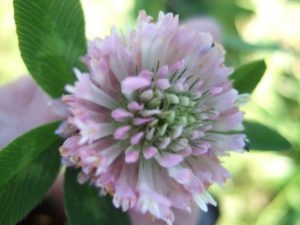Honey Bee and Pollinators
When thinking of bees the first two things that many people think of are flowers and honey. Pollinators provide a vital service to plants in helping them spread their genetics to produce more productive crops. In exchange for this service plant flowers provide nectar and surplus pollen to the bees. Bees then use these two food sources to raise their young and feed themselves during periods of time when there is limited food available. The pollen and nectar from each plant species has unique properties that make it very desirable for the bees to visit many different types of plants for a varied diet.
Honey Bee Food Source
Trees and shrubs can provide an abundant food resource for honey bees and their blooms often trigger important reproduction events for hives. When there are abundant nectar sources in bloom beekeepers refer to this as a nectar flow or flow. Here in the northwest we have three main flows; one in May when the maple trees are blooming, a second in June/July when blackberries are blooming, and a final one in late August when knotweed is blooming. If you select plants (trees, bushes, flowers) that bloom outside of these flows your garden will be providing a food source when resources are scarce and will be sure to attract many pollinators. For example many herbs will be covered in bees all summer long, and flowers like asters and sunflowers will be covered in bees later summer into fall.
Gardening to Attract Honey Bees
When planting to attract bees another consideration to make is how to prepare and maintain your garden. Often people battle to remove every weed from their yards, when in fact most weeds are excellent food sources for bees. Dandelions are a critical early spring food source for the bees, and clover is a good summer food source. If you find that you must use a chemical product in your garden please carefully follow the label and remember that if it is designed to kill insects then it can and will kill bees. Also if the label doesn’t indicate as much, never spray an insecticide on a flower bloom especially in the morning as it’s sure to be collected with the pollen and nectar and taken back to the hive where it can kill many more bees and kill the entire hive.
Don’t forget to check in with your favorite nursery, they often have classes on organic gardening. Many have sections devoted to Butterfly and Hummingbird favorite plants, many of which are favorites of honeybees as well.
Bee-Friendly Plants
The flowers that are the most appealing to bees are those that have visible pollen or nectar that is easy to reach. The hummingbirds long beak is well suited to reach deep into long thing flowers like honey suckles, however honey bees tongues are not very long and will not be able to reach the nectar deep inside the flower. Also hybrid flowers that have large showy blooms typically produce little nectar or pollen and very useful to the bees as a food source. Also speaking of visible features of a flower the bees also can see color with shades of blue being the their most preferred. Honey bees are well suited to agriculture over other pollinators because they prefer to work a single plant source on each trip to/from the hive. This means that your garden will be more attractive to bees if you plant clusters of the same type of flowers instead of a wide variety of flowers spread all over.
See PSBA’s list of Bee Friendly Plants for Washington’s Puget Sound Area.
4 Ways You Can Help Honey Bees
- Avoid using pesticides – insecticides don’t discriminate between insects. Systemic insecticides (e.g., neonicotinoids, including imidacloprid) especially have been shown to negatively affect the health of honey bees, and have been banned from use in other countries for this reason.
- Plant pollinator-friendly plants, especially local native ones to provide good sources of nectar and pollen. Choose several colors of flowers. Bees are especially attracted to blue, violet, white and yellow. Choose plants that flower throughout the seasons to support bees at different times of the year.
- Create a water source in your yard for pollinators. Honey bees need water to cool their hive and to dilute honey for feeding young bees.
- Encourage others to plant bee-friendly gardens and to avoid pesticides.